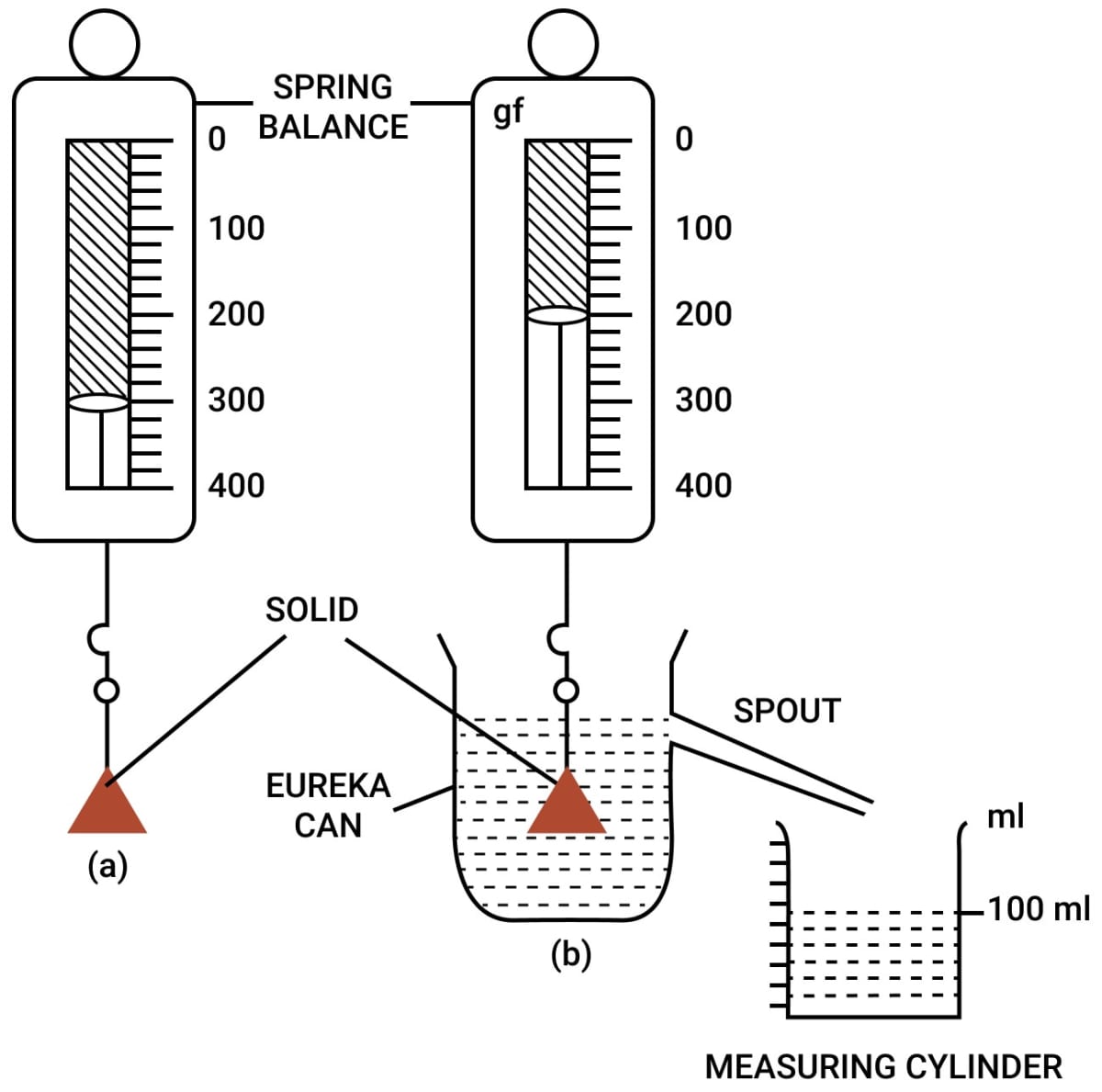Physics
Prove that the loss in weight of a body when immersed wholly or partially in a liquid is equal to the buoyant force (or upthrust) and this loss is because of the difference in pressure exerted by liquid on the upper and lower surfaces of the submerged part of the body.
Fluids Upthrust
40 Likes
Answer
Consider a cylindrical body PQRS of cross-sectional area A immersed in a liquid of density ρ as shown in the figure. Let the upper surface PQ of body be at a depth h1 while it's lower surface RS be at a depth h2 below the free surface of liquid.

At depth h1, the pressure on the upper surface PQ
P1 = h1 ρ g
∴ Downward thrust on the upper surface PQ
F1 = pressure x area = h1 ρ g A [Equation 1]
At depth h2, the pressure on the lower surface RS
P2 = h2 ρ g
∴ Upward thrust on the lower surface RS
F2 = pressure x area = h2 ρ g A [Equation 2]
The horizontal thrust at various points on the vertical sides of the body get balanced because liquid pressure is same at all points at the same depth.
From above equations (1) and (2), it is clear that F2 > F1 as h2 > h1 and hence the body will experience a net upward force.
Resultant upward thrust on the body
FB = F2 – F2
= h2ρgA - h2ρgA
= A(h2 - h1)ρg
But, A(h2 - h1) = V, the volume of the body submerged in the liquid.
∴ Upthrust FB = Vρg
Vρg = Volume of solid immersed x density of liquid x acceleration due to gravity
Since a solid when immersed in a liquid, displaces liquid equal to the volume of its submerged part, therefore
Vρg = Volume of liquid displaced x density of liquid x acceleration due to gravity
= mass of liquid displaced x acceleration due to gravity
= weight of the liquid displaced by the submerged part of the body.
Hence,
Upthrust = weight of the liquid displaced by the submerged part of the body.
Now in another experiment, we suspend a solid by a thin thread attached to the hook of a spring balance to check its weight. Once the weight is noted, we fill a eureka can with water till its spout and place a measuring cylinder below the spout of the eureka can. The solid is then immersed in water and the displaced water is collected in the cylinder.

When the water stops dripping, the weight of the solid and the volume of water in the cylinder are noted.
In the above figure, the solid weighs 300 gf in air and 200 gf when it is completely immersed in water. The volume of water collected in the measuring cylinder is 100 ml i.e., 100 cm3
∴ Loss in weight = 300 gf - 200 gf = 100 gf [Equation 1]
Volume of water displaced = Volume of solid = 100 cm3
∵ Density of water = 1 g cm-3
∴ Weight of water displaced = 100 gf [Equation 2]
From equations 1 and 2,
Weight of water displaced = Upthrust or loss in weight.
Thus, the weight of water displaced by a solid is equal to the loss in weight of solid.
Answered By
25 Likes
Related Questions
Describe an experiment to show that a body immersed in a liquid appears lighter than it really is.
A body held completely immersed inside a liquid experiences two forces (i) F1, the force due to gravity and (ii) F2, the buoyant force. Draw a diagram showing the direction of these forces acting on the body and state the conditions when the body will float or sink.
Describe an experiment to verify Archimedes' principle.
A body of volume 100 cm3 weighs 5 kgf in air. It is completely immersed in a liquid of density 1.8 x 103 kg m-3. Find (i) the upthrust due to liquid and (ii) the weight of the body in liquid.